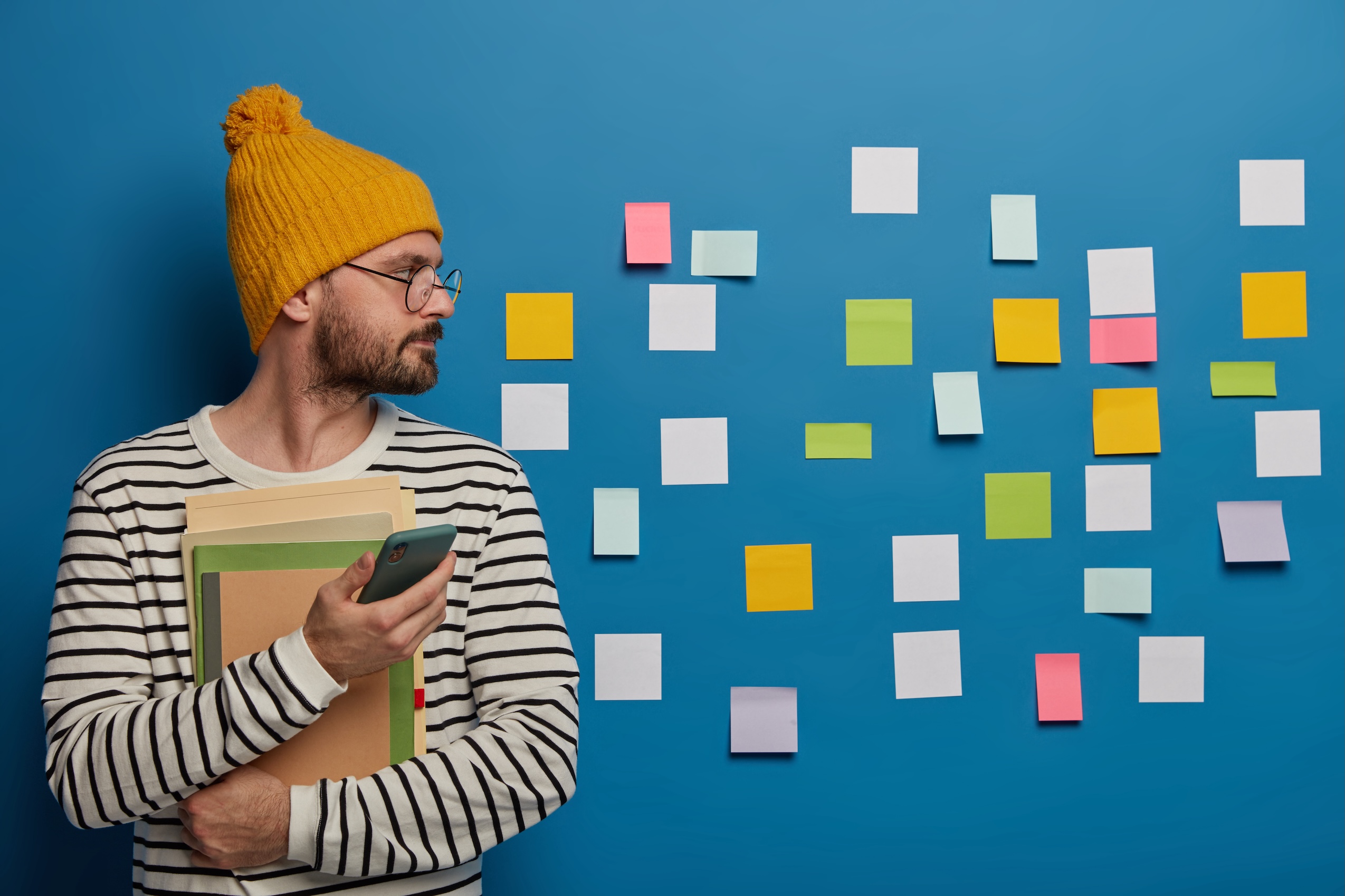
KEEP PLANNING, KEEP THINKING AHEAD!
This is a really challenging time for the creative industries, with the big concern over the global economy, AI, and advances in technology racing ahead quicker than ever before. But how does that really affect us as designers?
You see it on the news every day, and everywhere you look businesses are closing down, and that includes many design studios and advertising agencies. I have heard some businessmen out there saying that man is too greedy for this economic problem to continue and it will all get sorted out soon. But when and how long, and will we be needed in the same way as before?
As designers, we have to change with the times, we have to evolve with the environment around us. It is important that we develop different and effective methods in providing design solutions to our clients and potential customers. Think about costs, and think about easier and less cost-effective production methods. That is what we are all about, creating and developing something different.
Planning ahead is crucial for graphic designers in today’s fast-paced and competitive environment. With constantly evolving trends, technologies, and client expectations, effective planning ensures that projects are executed efficiently, on time, and within budget. By mapping out a clear strategy, designers can allocate resources wisely, anticipate potential challenges, and create a roadmap that aligns with client goals and deadlines. This proactive approach not only enhances productivity and creativity but also fosters stronger client relationships by demonstrating professionalism and reliability. Moreover, thorough planning allows designers to stay ahead of industry trends, continually refining their skills and adapting to new tools and techniques, ultimately leading to more innovative and impactful design solutions.
I read a book many years ago by Pat Matson Knapp called ‘Designers in Handcuffs’, which is a great example of what graphic designers face throughout their career. It looks at how you can work with clients with restricted budget and situations. If you can get the chance, get a copy and have a read. But it doesn’t solve what is happening now. You should look at this book, and then look deeper into taking this to another stage or level.
It’s time for the real designers out there to get their creative thinking heads on – the one’s who manage to come up with the best and most cost effective solutions for their clients, are the ones who are going to survive this.
Graphic designers today navigate a rapidly evolving landscape, facing several significant challenges. The constant advancement of technology demands continuous learning and adaptation to new software and tools. Staying current with trends while maintaining originality can be difficult, as the market is saturated with a plethora of creative ideas. The rise of artificial intelligence and automation also poses a potential threat, as some design tasks can now be performed by machines, potentially reducing the demand for human designers. Furthermore, the increasing emphasis on digital presence and online marketing means designers must be proficient in user experience (UX) and user interface (UI) design, adding to their already diverse skill set. Looking to the future, graphic designers must also consider the ethical implications of their work, particularly regarding the influence of visual media on societal norms and values. Balancing creativity with functionality, staying ahead of technological advancements, and addressing ethical considerations will be ongoing challenges for graphic designers in the years to come.
AI will positively impact graphic designers by automating routine tasks, such as resizing images, adjusting colors, and generating design templates, thus freeing up time for more creative and complex work. With AI-powered tools, designers can quickly prototype ideas, receive instant feedback, and enhance their skills through intelligent suggestions and corrections. Additionally, AI can analyse trends and user preferences, enabling designers to create more personalised and effective designs, ultimately elevating the quality and efficiency of their creative process.
Many changes ahead for us and you!
The Creative Design School plays a crucial role in equipping aspiring and current graphic designers with the skills and knowledge needed to tackle contemporary and future challenges. By offering a curriculum that emphasises not only traditional design principles but also the latest technological advancements, the school ensures that students are proficient in cutting-edge tools and software. Courses on emerging trends such as AI in design, UX/UI design, and digital marketing prepare students to stay competitive in a rapidly changing industry. Moreover, the school fosters a strong foundation in critical thinking and ethical design practices, encouraging designers to consider the societal impact of their work. Through workshops, industry partnerships, and real-world projects, the Creative Design School also provides invaluable networking opportunities and hands-on experience, helping students to build a versatile portfolio and connect with potential employers. By addressing both current and future challenges, the school ensures its graduates are well-prepared to innovate and excel in the dynamic field of graphic design.
MORE NEWS AND UPDATES BELOW
COMPLETE COURSES LIST 2024 - 2025
SCHOOL OF GRAPHIC DESIGN
Graphic Design for Beginners Level 1
Graphic Design Level 2
Advanced Graphic Design Level 3
SPECIALIST DESIGN COURSES LEVEL 4
Advertising Design Level 4
Brand & Corporate ID Design Level 4
Packaging Design Level 4
Visual Communication Level 4
PROFESSIONAL + BUSINESS COURSES LEVEL 5
Creative Thinking & Process Techniques PL5
Creative Team Building PL5
SCHOOL OF TEXTILE DESIGN
Textile Design for Beginners Level 1
Textile Design Level 2
SHORT COURSES + WORKSHOPS
Introduction to Graphic Design Short Course
Logo Design Short Course
Creative Thinking Short Course
Become a Freelancer Short Course
Digital Illustration for Beginners Short Course
